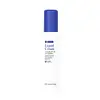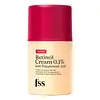What's inside
What's inside
 Key Ingredients
Key Ingredients

 Benefits
Benefits

 Concerns
Concerns

 Ingredients Side-by-side
Ingredients Side-by-side

Water
Skin ConditioningGlycerin
HumectantCaprylic/Capric Triglyceride
MaskingGlyceryl Stearate
EmollientPolyacrylate Crosspolymer-11
Emulsion StabilisingZinc PCA
HumectantPhenoxyethanol
PreservativeC15-19 Alkane
SolventCeteareth-20
CleansingBHT
AntioxidantCeteareth-12
EmulsifyingCetearyl Alcohol
EmollientCetyl Palmitate
EmollientAllantoin
Skin ConditioningDiphenyl Dimethicone
EmollientSqualane
EmollientTriethylene Glycol
MaskingCamellia Sinensis Leaf Extract
AntimicrobialCentella Asiatica Leaf Extract
Skin ConditioningCladosiphon Okamuranus Extract
Skin ConditioningSalix Alba Bark Extract
AstringentDecyl Glucoside
CleansingCoffea Arabica Seed Extract
Masking1,2-Hexanediol
Skin ConditioningCitrus Aurantium Bergamia Leaf Extract
AstringentPinus Densiflora Leaf Extract
AntimicrobialWater, Glycerin, Caprylic/Capric Triglyceride, Glyceryl Stearate, Polyacrylate Crosspolymer-11, Zinc PCA, Phenoxyethanol, C15-19 Alkane, Ceteareth-20, BHT, Ceteareth-12, Cetearyl Alcohol, Cetyl Palmitate, Allantoin, Diphenyl Dimethicone, Squalane, Triethylene Glycol, Camellia Sinensis Leaf Extract, Centella Asiatica Leaf Extract, Cladosiphon Okamuranus Extract, Salix Alba Bark Extract, Decyl Glucoside, Coffea Arabica Seed Extract, 1,2-Hexanediol, Citrus Aurantium Bergamia Leaf Extract, Pinus Densiflora Leaf Extract
Water
Skin ConditioningPropylene Glycol
HumectantLactobacillus/Collagen/Mesembryanthemum Crystallinum Leaf Extract Ferment Lysate
Skin ConditioningCaprylic/Capric Triglyceride
MaskingIsononyl Isononanoate
EmollientGlycerin
HumectantHydroxypropyl Starch Phosphate
Butyrospermum Parkii Butter
Skin ConditioningCetyl Alcohol
EmollientAllantoin
Skin ConditioningPEG-100 Stearate
Glyceryl Stearate
EmollientPolyglutamic Acid
Skin ConditioningBisabolol
MaskingCamellia Sinensis Leaf Extract
AntimicrobialGlycine Soja Oil
EmollientRetinol
Skin ConditioningSodium Hyaluronate
HumectantButylene Glycol
HumectantCeramide NP
Skin ConditioningHydrolyzed Hyaluronic Acid
HumectantHydroxypropyltrimonium Hyaluronate
Sodium Acetylated Hyaluronate
HumectantPhenoxyethanol
PreservativeCarbomer
Emulsion StabilisingSilica
AbrasivePPG-3 Benzyl Ether Myristate
EmollientPolysorbate 20
EmulsifyingPEG-7 Glyceryl Cocoate
EmulsifyingTriethanolamine
BufferingPei-10
Hydrolyzed Corn Starch Octenylsuccinate
AbsorbentHydrolyzed Corn Starch
HumectantZea Mays Starch
AbsorbentLauryl Laurate
Skin Conditioning1,2-Hexanediol
Skin ConditioningEthylhexylglycerin
Skin ConditioningBHT
AntioxidantBHA
AntioxidantDaucus Carota Sativa Root Extract
Skin ConditioningBeta-Carotene
Skin ConditioningTocopherol
AntioxidantPentaerythrityl Tetra-Di-T-Butyl Hydroxyhydrocinnamate
AntioxidantWater, Propylene Glycol, Lactobacillus/Collagen/Mesembryanthemum Crystallinum Leaf Extract Ferment Lysate, Caprylic/Capric Triglyceride, Isononyl Isononanoate, Glycerin, Hydroxypropyl Starch Phosphate, Butyrospermum Parkii Butter, Cetyl Alcohol, Allantoin, PEG-100 Stearate, Glyceryl Stearate, Polyglutamic Acid, Bisabolol, Camellia Sinensis Leaf Extract, Glycine Soja Oil, Retinol, Sodium Hyaluronate, Butylene Glycol, Ceramide NP, Hydrolyzed Hyaluronic Acid, Hydroxypropyltrimonium Hyaluronate, Sodium Acetylated Hyaluronate, Phenoxyethanol, Carbomer, Silica, PPG-3 Benzyl Ether Myristate, Polysorbate 20, PEG-7 Glyceryl Cocoate, Triethanolamine, Pei-10, Hydrolyzed Corn Starch Octenylsuccinate, Hydrolyzed Corn Starch, Zea Mays Starch, Lauryl Laurate, 1,2-Hexanediol, Ethylhexylglycerin, BHT, BHA, Daucus Carota Sativa Root Extract, Beta-Carotene, Tocopherol, Pentaerythrityl Tetra-Di-T-Butyl Hydroxyhydrocinnamate
Ingredients Explained
These ingredients are found in both products.
Ingredients higher up in an ingredient list are typically present in a larger amount.
1,2-Hexanediol is a synthetic liquid and another multi-functional powerhouse.
It is a:
- Humectant, drawing moisture into the skin
- Emollient, helping to soften skin
- Solvent, dispersing and stabilizing formulas
- Preservative booster, enhancing the antimicrobial activity of other preservatives
Allantoin is a soothing ingredient known for its protective and moisturizingg properties. Because of this, it is often added to products with strong active ingredients.
Studies show higher concentrations of this ingredient can promote wound healing.
Though it can be derived from the comfrey plant, allantoin is produced synthetically for cosmetic products to ensure purity.
Learn more about AllantoinBHT is a synthetic antioxidant and preservative.
As an antioxidant, it helps your body fight off free-radicals. Free-radicals are molecules that may damage your skin cells.
As a preservative, it is used to stabilize products and prevent them from degrading. Specifically, BHT prevents degradation from oxidation.
The concerns related to BHT come from oral studies; this ingredient is currently allowed for use by both the FDA and EU.
However, it was recently restricted for use in the UK as of April 2024.
Learn more about BHTCamellia Sinensis Leaf Extract is derived from the leaves of the tea plant. Black tea, green tea, and oolong tea are all harvested from this plant.
This ingredient has many skin benefits:
This ingredient contains polyphenols, a strong antioxidant. Antioxidants help fight off molecules that damage skin cells.
On top of that, the antioxidants in green tea neutralize free-radicals from the sun. This gives the skin some extra UV protection, but should not replace sunscreen.
Many components of tea have anti-inflammatory properties.
Polyphenols and L-theanine help soothe the skin and reduce irritation. The caffeine in Camellia Sinensis Leaf Extract helps calm inflamed blood vessels.
Other compounds found in tea include: Vitamin Bs, linoleic acid, magnesium, calcium, iron, and zinc.
Research has shown both drinking Camellia Sinensis Leaf Tea and applying it to the skin can help boost skin elasticity and hydration. Studies also show using tea extract may reduce sebum, or oil, production.
Learn more about Camellia Sinensis Leaf ExtractThis ingredient is an emollient, solvent, and texture enhancer. It is considered a skin-softener by helping the skin prevent moisture loss.
It helps thicken a product's formula and makes it easier to spread by dissolving clumping compounds.
Caprylic Triglyceride is made by combining glycerin with coconut oil, forming a clear liquid.
While there is an assumption Caprylic Triglyceride can clog pores due to it being derived from coconut oil, there is no research supporting this.
Learn more about Caprylic/Capric TriglycerideGlycerin is already naturally found in your skin. It helps moisturize and protect your skin.
A study from 2016 found glycerin to be more effective as a humectant than AHAs and hyaluronic acid.
As a humectant, it helps the skin stay hydrated by pulling moisture to your skin. The low molecular weight of glycerin allows it to pull moisture into the deeper layers of your skin.
Hydrated skin improves your skin barrier; Your skin barrier helps protect against irritants and bacteria.
Glycerin has also been found to have antimicrobial and antiviral properties. Due to these properties, glycerin is often used in wound and burn treatments.
In cosmetics, glycerin is usually derived from plants such as soybean or palm. However, it can also be sourced from animals, such as tallow or animal fat.
This ingredient is organic, colorless, odorless, and non-toxic.
Glycerin is the name for this ingredient in American English. British English uses Glycerol/Glycerine.
Learn more about GlycerinGlyceryl Stearate is a mix of glycerin and stearic acid.
It is used to stabilize the mixing of water and oil ingredients. By preventing these ingredients from separating, it can help elongate shelf life. It can also help thicken the product's texture.
As an emollient, it helps soften skin and supports barrier-replenishing ingredients.
In cosmetics, Glyceryl Stearate is often made from vegetable oils or synthetically produced.
This ingredient may not be fungal-acne safe
Fun fact: The human body also creates Glyceryl Stearate naturally.
Learn more about Glyceryl StearatePhenoxyethanol is a preservative that has germicide, antimicrobial, and aromatic properties. Studies show that phenoxyethanol can prevent microbial growth. By itself, it has a scent that is similar to that of a rose.
It's often used in formulations along with Caprylyl Glycol to preserve the shelf life of products.
Water. It's the most common cosmetic ingredient of all. You'll usually see it at the top of ingredient lists, meaning that it makes up the largest part of the product.
So why is it so popular? Water most often acts as a solvent - this means that it helps dissolve other ingredients into the formulation.
You'll also recognize water as that liquid we all need to stay alive. If you see this, drink a glass of water. Stay hydrated!
Learn more about Water